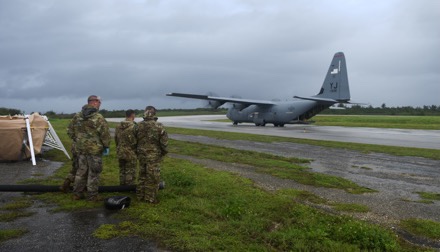
ARLINGTON, Va. (AFNS) —
The Air Force announced its vision for operating in modern, contested environments June 23, created to codify and synchronize agile combat employment tactics enterprise-wide.
Adversary threats to Air Force operations at forward bases can deny U.S. power projection, overwhelm traditional defense designs, impose prohibitive losses and lead to joint mission failure. To address these challenges, ACE shifts operations from centralized physical infrastructures to a network of smaller, dispersed locations or cluster bases.
“We must maintain the high ground, fighting from a position of advantage,” said Air Force Chief of Staff Gen. CQ Brown, Jr. “Fundamentally changing the way we generate airpower will complicate adversary planning and provide more options for our joint force and coalition commanders. Our approach to operations over the past 20 years has prioritized efficiency in an environment that is not highly contested. ACE puts the premium on effectiveness in an increasingly challenging threat environment.”
Operationalizing ACE will aid in: the codification of a repeatable and understandable process; forces that are suitably organized, trained, and equipped; theaters that are postured with the appropriate equipment, assets and host nation agreements; and robust joint service and partner nation integration and interoperability.
ACE looks somewhat different depending on the theater of operation and the types of forces involved, which necessitates a variety of approaches for the warfighter.
In Europe, it addresses what might be called the tyranny of proximity, or short threat timelines against Russian missile launches or other attacks, and an expectation that any flight operations are readily observable. The Pacific presents the tyranny of distance, or vast stretches of ocean between likely forward operating locations, with many of them in range of China’s rapidly advancing missile capabilities.
At the tactical level, the ACE playbook approaches and capabilities must enable dispersed forces to adapt and prevail despite uncertainty, using the best information available to local commanders. This will necessitate shifting between offensive and defensive operations in response to what is achievable with available connectivity and logistical support.
At the operational level for centralized command and distributed control, understanding what forces can achieve with available resources and trade-off risks becomes critical. Offensive and defensive capabilities and expertise available at each forward operating location may vary, as will available logistical support.
The ACE framework provides the Air Force the ability to develop, maintain, and share timely, accurate, and relevant mission information across dispersed forces despite adversary attempts to deny or degrade it. It also prepares leaders to make and disseminate risk-informed decisions with limited information.
“Adapting to this new paradigm shift ensures we maintain a combat-effective force,” Brown said. “Our Airmen can expect to conduct operations at a speed, scope, complexity and scale exceeding recent campaigns from distributed locations with increased survivability and enhanced effectiveness.”
In addition to streamlining tactics, developing the Airmen needed to execute core, functional and theater-specific requirements is crucial to operationalizing ACE.
The Air Force is evolving from the just-in-time expeditionary model to recognizing that any Airman, no matter where they are stationed or deployed, needs to be prepared for a world of increasing uncertainty and have the proper training to respond to any contingency.
Beginning with adjustments to foundational Ready Airmen Training requirements, Airmen will receive training more evenly spread throughout all four phases of the Air Force Force Generation cycle versus just-in-time training in advance of an expeditionary deployment.
Additionally, future training models will be adaptable to Airmen’s experience levels and need. Training multi-capable Airmen represents a shift from traditional, large force packages to a smaller footprint to provide combat support and solve problems with the resources at hand.
Those whose jobs are more directly connected to operations in general, and ACE in particular, will require more focused training on how to be multi-capable on an airfield. The exact breakout of Air Force Specialty Codes and required skills are still being determined.
The intent is to train Airmen to be more productive on discrete, wartime tasks that would reduce the number of Airmen in harm’s way in austere environments.
“The multi-capable Airman concept is not about doing more with less,” said Chief Master Sgt. of the Air Force JoAnne S. Bass. “Instead, it’s about how we deliberately train and empower our Airmen to get after future high-end fights. Our Airmen are the competitive advantage we have over any adversary, and how we prepare them for future conflict matters.”
Secretary of the Air Force Public Affairs

